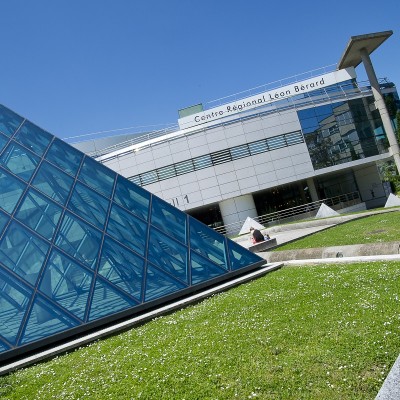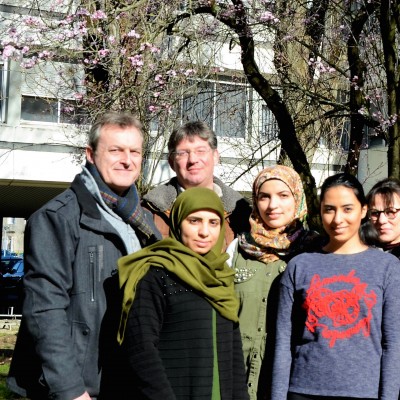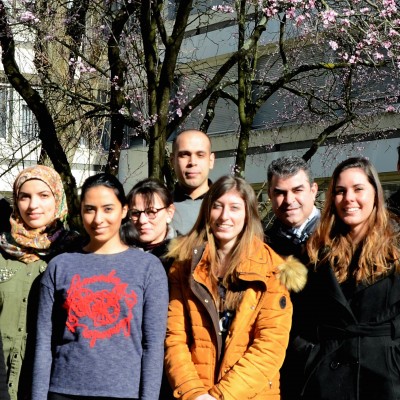Charity dedicated to the fight
against childhood cancer
against childhood cancer

Eva pour la vie supports the Adapted Physical Activity project for children treated for Cancer and Insulin Sensitivity APACIS, led by Professor Marlène Pasquet, pediatric onco-hemato-immunologist at the children's hospital of the Toulouse University Hospital and Justine Thomas, APA teacher and doctoral student, as well as the recruitment of an APA position within this department.
Advances in treatment and supportive care have improved the five-year survival rate of children with cancer. However, childhood cancer treatment is often toxic in the medium and long term. As a result, children who have overcome cancer are at high risk of developing chronic diseases in adulthood, mainly heart and metabolic diseases.
In children fighting cancer, adapted physical activity (APA) has been shown to have positive effects during and after treatment: it improves general health, heart activity, muscle strength, quality of life and reduces fatigue. However, the consequences of practicing physical activity from the time of diagnosis have not been addressed in the studies published on this subject, particularly in terms of metabolic tolerance of prolonged chemotherapy and corticosteroid therapy. In addition, no study has looked at the effects on the risks of cardiac or metabolic diseases in the long term. In healthy children, APA is known to improve metabolic parameters and reduce the risks of chronic metabolic diseases.
This project aims to determine whether, as in healthy children, the benefits of physical activity on metabolic health apply to children treated for cancer, right from the time of diagnosis. Interview with Professor Marlène PASQUET and Justine Thomas
Justine Thomas (JT) and Pr Marlène Pasquet (MP), can you introduce yourselves?
JT: I am a teacher in Adapted Physical Activity and a PhD student in science. My daily life at the CHU is divided between sessions of physical activities adapted to patients treated in the hematology-oncology department as well as activities related to the APACIS research protocol (monitoring, evaluation, data analysis, conferences, communication).
MP: Professor in Pediatric Hematology Oncology for over 15 years now in the HIOP department in Toulouse. In the department, I deal more specifically with children with blood diseases, patients with benign hematological diseases and children with immune deficiencies. As a teacher, I train 5th year students and interns, and I lead the group dedicated to GATA2 diseases within team 16 of the CRCT (IUCT-O, INSERM U1037). I have been supervising Me Thomas Justine since her Master 2 and now her science thesis in this project.
You are the originator of the project “Adapted physical activity in children treated for cancer and insulin sensitivity”. Can you explain to us the main reasons that prompted you to write this project? Who is it aimed at and how will it be carried out?
JT: The APACIS protocol comes from a recent observation: we are treating pediatric cancers better and better, but we lack the elements to support the long-term post-cancer, in particular the metabolic after-effects of treatments, which can give rise to diseases once adulthood is reached. We know that physical activity is a means of preventing these diseases in healthy adults and children, but no work has focused on this effect in children treated for cancer. It is this combination between the effect of sport and metabolic risk that motivated our work.
The APACIS study is aimed at all children aged between 5 and 18 years old, treated for any cancer at the Toulouse University Hospital. It consists of practicing physical activities in a supervised manner for 6 months, in hospital or at home, then being followed for 2 years. Metabolic assessments are carried out from blood samples, as well as assessments of physical health and nutrition, to ensure a comprehensive approach.
What are the prospects and your hopes for the outcome of this project?
JT: We are working on the possible extension of this study to other hospital centers. The preliminary results are encouraging with effects on metabolic toxicity and tolerance of the side effects of treatments. We hope that this study will provide the first elements on the effect of physical exercise on metabolic factors in pediatric cancers and that it will encourage other researchers to take an interest in the benefits of adapted physical activity in this population.
MP: the first results are in line with our clinical observation: beyond the well-being and the obvious psychological contribution of APA, tolerance to treatment seems better since the early introduction of adapted physical activity. Demonstrating this scientifically is a real challenge that we are taking up, through in-depth metabolomic analyses and analyses of the salivary, periodontal and fecal microbiota.
Beyond the call for public generosity, Eva pour la vie has been driving forward an unprecedented approach in Europe since 2012 – now shared by many associations through the Grandir Sans Cancer Dedération – asking the State to create a fund dedicated to research into childhood cancers, as well as to improve assistance to families of sick children. With Grandir Sans Cancer, she obtained the vote at the end of 2018 for an annual dedicated fund of €5M/year for this research, and at the end of 2021, a one-off addition of an additional €20M to promote the structuring of teams. She is currently mobilizing parliamentarians so that this fund is increased to €25M/year in order to include pediatric oncology clinical research. Finally, she hopes that the necessary APA positions will be systematically financed by the Ministry of Health for all pediatric oncology services. What do you think of this mobilization?
JT: I salute and thank Eva for her unwavering commitment to life in general, to research in pediatric cancerology and to the APA. Our profession is essential in such a service but still fragile or precarious, Eva's commitment to life as well as that of the Grandir Sans Cancer federation has allowed us to recruit a second APA teacher; beyond that, I think that associative commitment is a real asset to convince the ministry of the importance of our function.
MP: This mobilization is courageous, essential and crucial. The funding of these positions is absolutely not sustainable in any of the university hospitals in France and many scientific studies have shown the benefit of APA on the quality of life and the improvement of post-treatment conditions. Our study aims to provide additional scientific elements to this benefit in terms of tolerance, thanks to an early introduction. Studies are beginning to demonstrate the benefit of APA on the muscular system, immunity and cognition of children with Cancer. Funding these positions at an institutional level is a priority and we are very enthusiastic about this support provided by Eva pour la vie and the Grandir sans Cancer federation.
At the end of 2024, Eva pour la vie provided the sum of €10,000 to enable - with other associations - the recruitment of an APA (adapted physical activity) position within the pediatric oncology department of the Toulouse University Hospital. It also provided a €20,000 grant for the research project "adapted physical activity in children treated for cancer and insilunosensitivity (APACIS) - ancillary studies"



Eva pour la vie & Grandir Sans Cancer have decided to support the work of Dr. Célio POUPONNOT, at the Curie Institute, by funding the Project "Modeling of medulloblastoma using human cerebellar organoids and analysis of the effect of agricultural pollutants" through a grant. This research project includes a crucial environmental research component, the question of understanding in order to try to prevent being as important as the one that aims to better treat children with cancers ...



For more than 20 years, this teacher-researcher has been working on cancer. And it's been almost 10 years since he went to kidney cancer or renal cell carcinoma. By joining the team of Dr Christophe Grosset (Inserm, MiRCaDe team), he wanted to use his experience and take a new step forward by working on childhood cancer. He is the initiator of an ambitious project, which involves several surgeons, doctors and international researchers, on the study of nephroblastoma (or Wilms tumor) in children, co-funded by the association Eva pour la vie and Aidons Marina ...
Resistance to treatment is a major clinical problem, in particular in the case of osteosarcomas, bone tumors affecting children or adolescents. Indeed, chemotherapy, associated with surgery, is the central pillar of current treatment. However, many osteosarcomas are or become resistant to these antiproliferative drugs. Recurrences and / or the appearance of metastases are then frequent. 2 out of 5 patients cannot be cured! Osteosarcoma is therefore a pediatric cancer with a poor prognosis for which it is absolutely necessary to identify ways to counteract resistance to treatment in order to improve the chances of recovery for patients.


Since September 2014, Dr Martin Hagedorn has been leading a team of researchers (Caroline CAPDEVIELLE , Farah RAHAL, Justine CHARPENTIER and Mélissa MENARD) which devotes its research work to the identification of new therapeutic targets in brainstem tumors and to the improvement of its treatment methods. Work recognized by several European scientific teams & experts.

Dr Pasquier's research work mainly focuses on the repositioning of drugs which consists of testing, in new therapeutic indications, drugs already approved by the health authorities. The aim of this work is to identify new therapeutic targets for the most difficult to treat cancers and thus improve the care of patients suffering from these aggressive forms and refractory to treatment . In particular, pediatric cancers (neuroblastoma), brain tumors affecting children as well as adults (glioblastoma, medulloblastoma) as well as certain rare forms of cancer (angiosarcoma).
The work of the INSERM team co-directed by Dr Marie Castets (CR1 Inserm, HDR) and Dr Jean-Yves Blay (PUPH, HDR) focuses on cell death and cancers. Thanks to the support of Eva pour la Vie (55,000 euros) and other associations, this team is currently developing these lines of research on rhabdomyosarcomas, osteosarcomas and neuroblastomas ...

